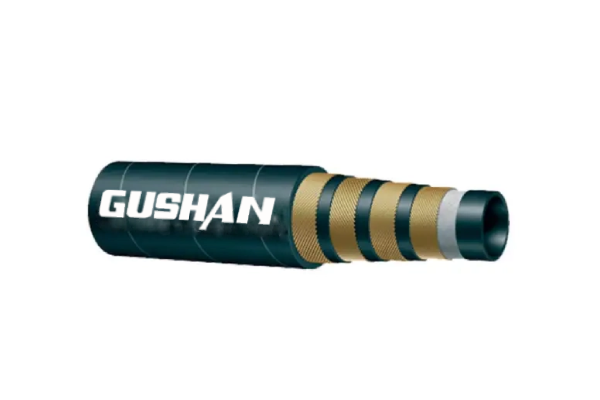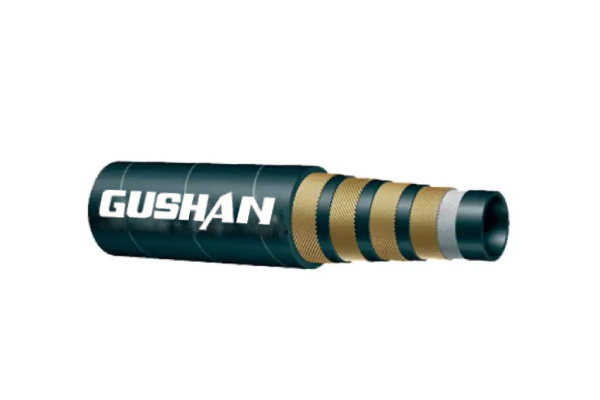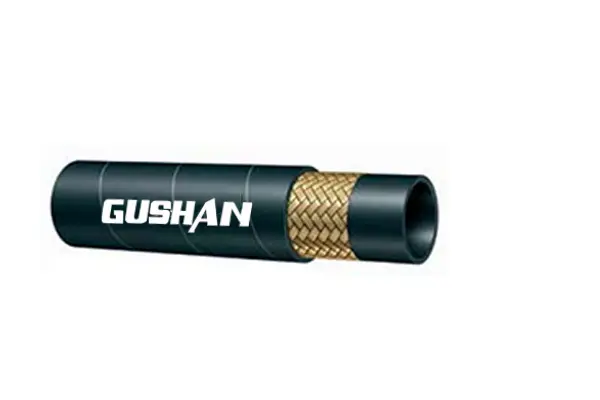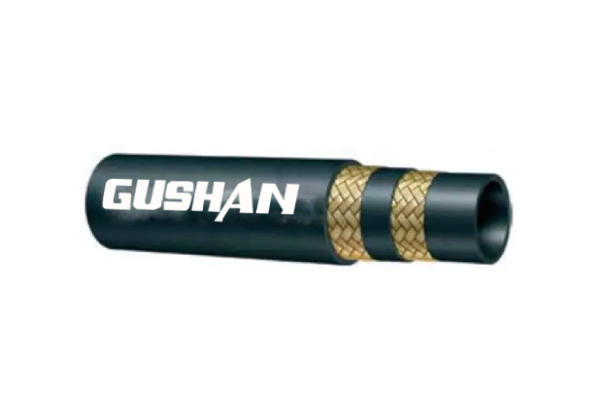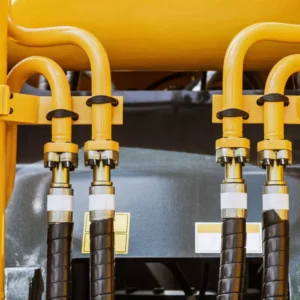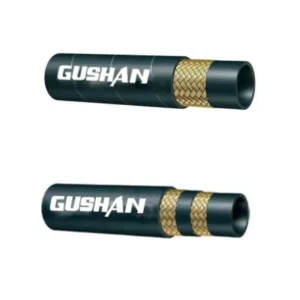Hydraulic systems power countless industries, but their high-pressure nature demands respect. A seemingly minor hose issue can escalate into a dangerous burst, causing severe injuries and costly downtime. This blog delves into critical hydraulic hose safety practices, focusing on preventing hazardous leaks and bursts.
Understanding the vulnerabilities of hydraulic hoses is paramount. We’ll explore essential inspection techniques, proper maintenance procedures, and safe handling practices. By prioritizing these measures, you can safeguard your team and equipment from the potential dangers of high-pressure hydraulic systems.
Recommended Hydraulic Hoses
What Causes Hydraulic Hose Risks
Hydraulic hoses are vital in numerous industries, but they also pose significant safety risks. Understanding the root causes of these dangers is crucial for preventing accidents. From external abrasion to internal pressure surges, various factors contribute to hose failure. Recognizing and addressing these issues is paramount for workplace safety.

1. Abrasion and External Damage:
- Hydraulic hoses are frequently exposed to harsh environments, where they can rub against machinery, sharp edges, or abrasive surfaces. This constant friction wears down the outer protective layer of the hose, eventually exposing the reinforcing wires. Once these wires are compromised, the hose’s structural integrity weakens, increasing the risk of bursts.
- In many industrial settings, hoses are subjected to vibrations and movement, which exacerbate abrasion. Improper routing or lack of protective sleeves can accelerate this wear. Furthermore, environmental factors like exposure to UV radiation, chemicals, or extreme temperatures can degrade the hose’s outer cover, making it more susceptible to abrasion.
- Preventing abrasion involves careful hose routing, using protective sleeves or guards, and regularly inspecting hoses for signs of wear. Implementing proper hose management practices, such as securing hoses to prevent excessive movement, is also crucial.
2. High Pressure and Pressure Surges:
- Hydraulic systems operate under extremely high pressure, which places significant stress on the hoses. Pressure surges, or spikes in pressure, can occur due to sudden changes in system operation, such as rapid valve movements or pump starts. These surges can exceed the hose’s rated pressure, leading to catastrophic failure.
- The internal pressure of hydraulic systems can quickly lead to hose fatigue. Over time, the constant flexing and pressure changes can weaken the hose’s reinforcing layers, making it prone to bursting. Additionally, if the hose is not correctly sized for the system’s pressure requirements, it can fail prematurely.
- To mitigate these risks, it’s essential to select hoses with appropriate pressure ratings, implement pressure relief valves, and ensure smooth system operation. Regular maintenance and pressure testing can help identify potential weaknesses before they lead to failures.
3. Improper Installation and Maintenance:
- Incorrect installation practices, such as twisting, kinking, or over-bending hoses, can significantly reduce their lifespan and increase the risk of failure. Kinks and twists restrict fluid flow, leading to increased pressure and heat buildup, which can damage the hose.
- Improperly tightened fittings can lead to leaks, while over-tightening can damage the hose or fitting. Furthermore, neglecting regular inspections and maintenance can allow minor issues to escalate into major problems.
- Preventative maintenance is key. Regularly inspecting hoses for signs of wear, leaks, or damage, and replacing them according to the manufacturer‘s recommendations, can prevent costly and dangerous failures. Additionally, ensuring that personnel are properly trained in hydraulic hose installation and maintenance is crucial.
Hydraulic Hose Risk Factors
| Risk Factor | Description | Prevention Measures |
| Abrasion | External wear due to friction against surfaces. | Use protective sleeves, proper routing, regular inspections. |
| High Pressure | Stress from operating under high fluid pressure. | Select hoses with appropriate pressure ratings, implement relief valves. |
| Pressure Surges | Sudden spikes in system pressure. | Ensure smooth system operation, use accumulators. |
| Improper Installation | Incorrect hose routing, twisting, kinking. | Follow manufacturer guidelines, train personnel. |
| Lack of Maintenance | Neglecting inspections and timely replacements. | Regular inspections, scheduled maintenance, hose replacement. |
| Temperature Extremes | Exposure to excessive heat, or cold. | Use hoses rated for the enviromental temperatures, use heat sheilding. |
| Fluid incompatibility | Using fluids that degrade the hose material. | ensure correct fluids are used, and that the hose is rated for those fluids. |
Hydraulic Hose Safety Factors
Several critical factors influence hydraulic hose safety. These factors can be broadly categorized into design, application, maintenance, and environmental considerations. Here’s a breakdown:
1. Hose Selection and Design:
- Pressure Rating: The hose must be rated for the maximum operating pressure of the hydraulic system, including potential pressure surges.
- Temperature Rating: The hose material must withstand the operating temperature range of the hydraulic fluid and the surrounding environment.
- Fluid Compatibility: The hose material must be compatible with the hydraulic fluid to prevent degradation.
- Size and Construction: The hose’s diameter and construction (reinforcement layers) must be appropriate for the flow rate and pressure requirements of the system.
- Standards Compliance: Hoses should comply with relevant industry standards (e.g., SAE, DIN, ISO).
2. Application and Installation:
- Proper Routing: Hoses should be routed to avoid abrasion, kinking, twisting, and excessive bending.
- Correct Fittings: Fittings must be compatible with the hose and the system’s pressure and fluid requirements.
- Secure Connections: Fittings must be properly tightened to prevent leaks, but not over-tightened to avoid damage.
- Vibration Control: Hoses should be secured to minimize vibration, which can lead to fatigue and failure.
- Impulse Testing: In applications with high-pressure impulses, hoses should be impulse tested to ensure they can withstand repeated pressure cycles.
3. Maintenance and Inspection:
- Regular Inspections: Hoses should be inspected regularly for signs of wear, damage, leaks, or deterioration.
- Preventative Maintenance: Hoses should be replaced according to the manufacturer‘s recommendations or when signs of wear are detected.
- Pressure Testing: Periodic pressure testing can identify weaknesses in hoses before they fail.
- Cleanliness: Maintaining clean hydraulic fluid and system components can prevent hose damage.
- Proper Storage: Hoses should be stored in a clean, dry environment away from direct sunlight and extreme temperatures.
4. Environmental Factors:
- Temperature Extremes: Exposure to extreme heat or cold can degrade hose materials.
- Chemical Exposure: Contact with chemicals can damage the hose’s outer cover or inner tube.
- UV Radiation: Exposure to sunlight can cause the hose material to deteriorate.
- Abrasion and Impact: Exposure to abrasive surfaces or impact from falling objects can damage the hose.
- Humidity and Moisture: High humidity or moisture can lead to corrosion of hose fittings and reinforcement layers.
By carefully considering these hydraulic hose safety factors, you can significantly reduce the risk of hose failures and ensure a safe working environment.
How to Protect Hydraulic Hoses

Protecting hydraulic hoses is essential for preventing costly downtime and, more importantly, serious injuries.
1. Proper Hose Selection and Installation
Selecting the correct hose for the application is the foundation of hose safety. This involves considering factors like pressure rating, temperature range, fluid compatibility, and hose size. Using a hose that’s not rated for the system’s operating conditions will inevitably lead to premature failure.
Ensuring that hoses are installed correctly, avoiding twists, kinks, and excessive bending, is crucial. Improper installation creates stress points that weaken the hose.
During hydraulic hose installation, proper routing is paramount. Hoses should be routed away from sharp edges, hot surfaces, and moving parts. Securing hoses to prevent excessive movement and vibration is also vital. Using the correct fittings and ensuring they’re properly tightened will prevent leaks and failures. Over-tightening, however, can also damage fittings, so following manufacturer specifications is crucial.
Regular Inspection and Maintenance
Regular inspections are the first line of defense against hose failure. Visually inspect hoses for signs of wear, such as cracks, abrasions, bulges, and leaks. Pay close attention to areas where hoses come into contact with other surfaces or are subjected to flexing. Implement a schedule of routine inspections, and keep detailed records of each inspection.
Preventative maintenance is equally important. Replace hoses according to the manufacturer‘s recommendations or when signs of wear are detected. Regular pressure testing can identify weaknesses before they lead to catastrophic failures. Maintaining clean hydraulic fluid is also crucial, as contaminated fluid can damage the hose’s inner lining. Also, when hoses are not in use, they should be stored properly, in a cool dry place, away from direct sunlight.
Implementing Protective Measures
Protective sleeves and guards can significantly extend the lifespan of hydraulic hoses. These coverings shield hoses from abrasion, impact, and environmental factors. Choose sleeves made from durable materials that can withstand the operating conditions. Spiral wrap, and other protection products are widely available. Also, when working in areas where hydraulic fluid could spray, burst protection sleeves are very important for worker safety.
In environments with extreme temperatures, consider using hoses with specialized temperature ratings or implementing heat shields. Protecting hoses from chemical exposure is also essential. If hoses are exposed to chemicals, ensure they’re compatible with the hose material or use protective coatings. Additionally, ensuring that hydraulic systems have pressure relief valves, will prevent pressure surges that can damage hoses.
Conclusion
Prioritizing hydraulic hose safety is paramount to prevent dangerous leaks and bursts. Consistent inspections, proper maintenance, and trained personnel are your first line of defense. Remember, even small leaks can escalate into serious hazards.
By adhering to best practices, you minimize risks and protect your team. Investing in quality hoses and fittings is crucial. Don’t compromise on safety; it safeguards both people and equipment.
For reliable hydraulic hoses engineered for safety and durability, contact Gushan Rubber today. Get a quote and ensure your systems are equipped with the best, minimizing risks and maximizing operational efficiency.

